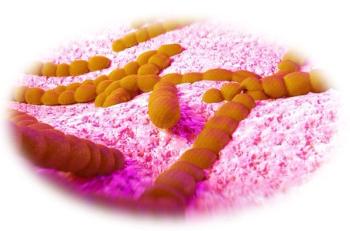
Oral Hairy Leukoplakia
During the past 2 weeks, a 34-year-old man with HIV infection experienced worsening mouth pain while chewing.
During the past 2 weeks, a 34-year-old man with HIV infection experienced worsening mouth pain while chewing.
The patient's T-cell count was 50/µL. He denied fever, chills, nausea, vomiting, diarrhea, and headache. Vital signs were normal. The patient was mildly cachectic and had whitish, plaquelike lesions on the lateral aspect of the tongue. These lesions could not be scraped off with a tongue blade.
A biopsy specimen of material from the tongue revealed profound acanthosis and epithelial hyperplasia. Intense replication of the Epstein-Barr virus was found. The diagnosis of oral hairy leukoplakia was made.
Gopi Rana-Mukkavilli, MD of New York City prescribed a 6-week course of oral acyclovir to be added to this patient's HIV medication. A follow-up at 8 weeks found fewer, less severe lesions remaining on the lateral dorsum of the tongue; the acyclovir therapy was continued.
Oral hairy leukoplakia occurs almost exclusively in immunosuppressed persons with HIV infection. It is not considered a premalignant condition and is not a harbinger of squamous cell cancer. The cause of oral hairy leukoplakia appears to be the Epstein-Barr virus.
The lesions are filiform, raised papillae that give a “hairy” appearance. Oral hairy leukoplakia can be confused with oral candidiasis; but no fungal hyphae are identified, and the lesions cannot be scraped off as easily as the candidal patches. Generally, leukoplakia is asymptomatic; symptomatic patients are treated with acyclovir.
Newsletter
Enhance your clinical practice with the Patient Care newsletter, offering the latest evidence-based guidelines, diagnostic insights, and treatment strategies for primary care physicians.






































































































































































































































































































